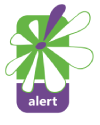CPR Training – The Seven Steps

CPR training is something that can help you save a life in an emergency situation. CPR stands for Cardio-Pulmonary Resuscitation, a combination of chest compresses and mouth-to-mouth ventilation that can help sustain a person’s life should they stop breathing or if their heart stops beating. It’s a procedure that’s considered vital knowledge to anyone who knows first-aid.
Knowing CPR can be the difference between life and death when the situation calls for it. After all, no one can really predict when and where an emergency will occur. So it’s always a good idea to know CPR through free workshops held by NGOs like ALERT.
However, before one can even begin the process of CPR, there are certain steps that one must follow to ensure that it is done in a relatively safer environment.
Here is what any well-trained first-responder will do before and during CPR Training.
Step 1: Check the victim and the surroundings.
Is the area clear of any oncoming vehicles and crowding passersby?
Is the victim conscious? Ask them if they’re okay.
Step 2: Call Emergency Services
Call 102 for ambulance assistance, and prepare to administer first-aid treatment.
Step 3: Free the Wind pipe
Lay the victim on their back gently and tilt their head back slightly.
Step 4: Are they breathing?
Make sure the victim is breathing properly.
If the victim is not breathing properly, it is time to administer CPR.
Step 5: Begin Chest Compressions
This must only be done by those who have been trained for the same. One hand goes to the top of the chest, the other to the middle, palms facing downward.
Then, it is important to press down repeatedly with enough force to depress the chest by 2 inches. It’s important to do this at a frequency of 100 times a minute.
Step 6: Artificial Respiration
As mentioned earlier, it is important to carry out this process only if trained to do so. Here is where the first responder will administer rescue breaths to keep the victim’s blood oxygenated.
They will also check for blockage.
Step 7: keep going
The first responder will continue the process until the person begins breathing again, or until emergency services arrive.
Knowing CPR can be the difference between life and death when the situation calls for it. After all, no one can really predict when and where an emergency will occur. So it’s always a good idea to know CPR through free workshops held by NGOs like ALERT.
However, before one can even begin the process of CPR, there are certain steps that one must follow to ensure that it is done in a relatively safer environment.
Here is what any well-trained first-responder will do before and during CPR Training.
Step 1: Check the victim and the surroundings.
Is the area clear of any oncoming vehicles and crowding passersby?
Is the victim conscious? Ask them if they’re okay.
Step 2: Call Emergency Services
Call 102 for ambulance assistance, and prepare to administer first-aid treatment.
Step 3: Free the Wind pipe
Lay the victim on their back gently and tilt their head back slightly.
Step 4: Are they breathing?
Make sure the victim is breathing properly.
If the victim is not breathing properly, it is time to administer CPR.
Step 5: Begin Chest Compressions
This must only be done by those who have been trained for the same. One hand goes to the top of the chest, the other to the middle, palms facing downward.
Then, it is important to press down repeatedly with enough force to depress the chest by 2 inches. It’s important to do this at a frequency of 100 times a minute.
Step 6: Artificial Respiration
As mentioned earlier, it is important to carry out this process only if trained to do so. Here is where the first responder will administer rescue breaths to keep the victim’s blood oxygenated.
They will also check for blockage.
Step 7: keep going
The first responder will continue the process until the person begins breathing again, or until emergency services arrive.

